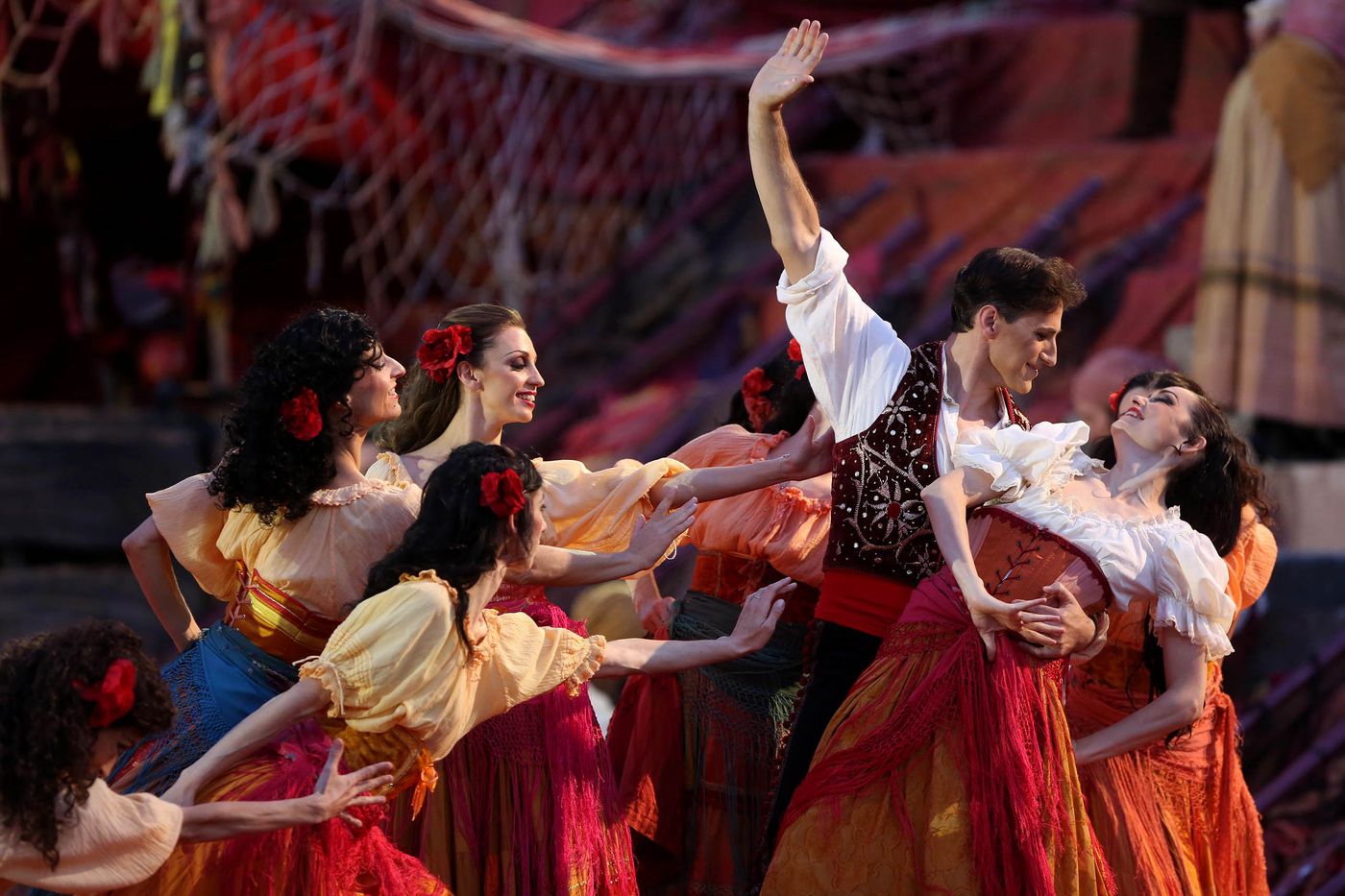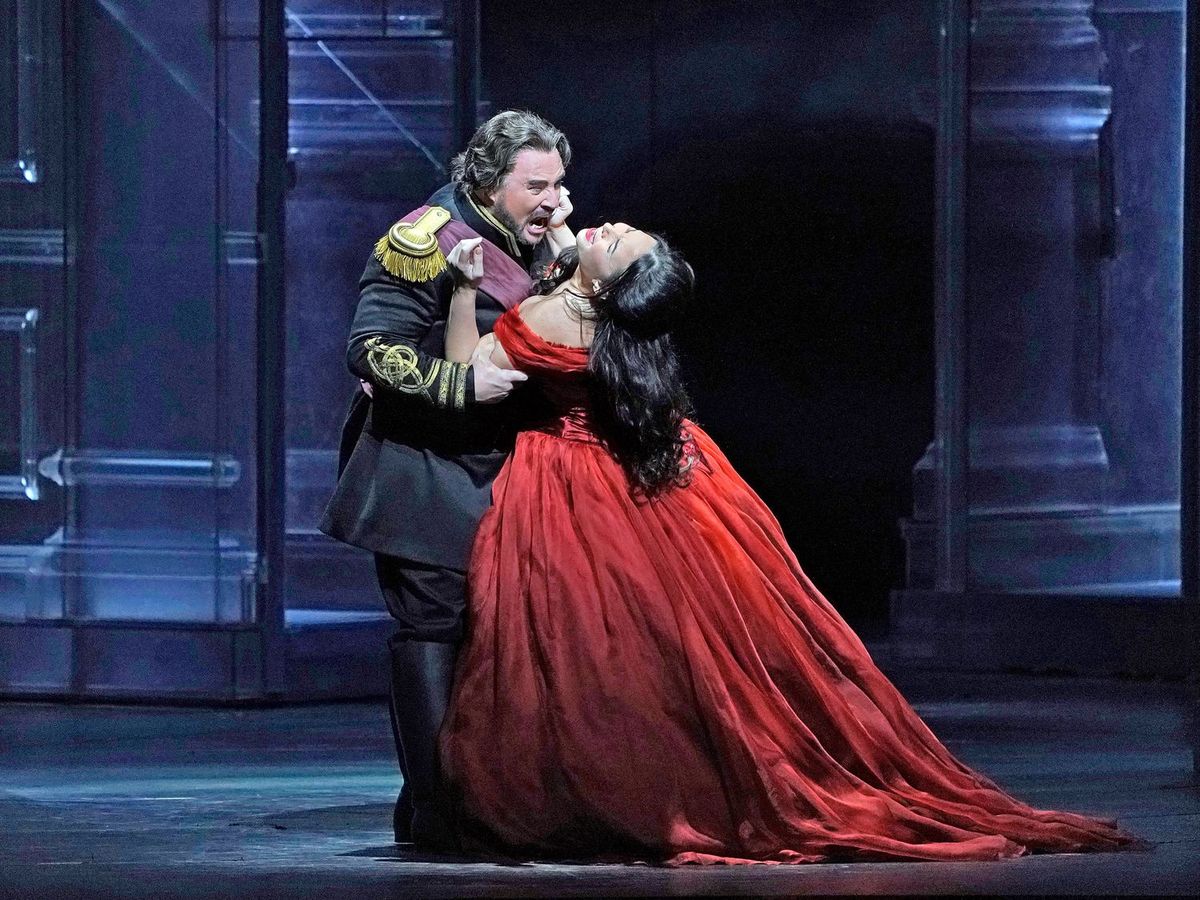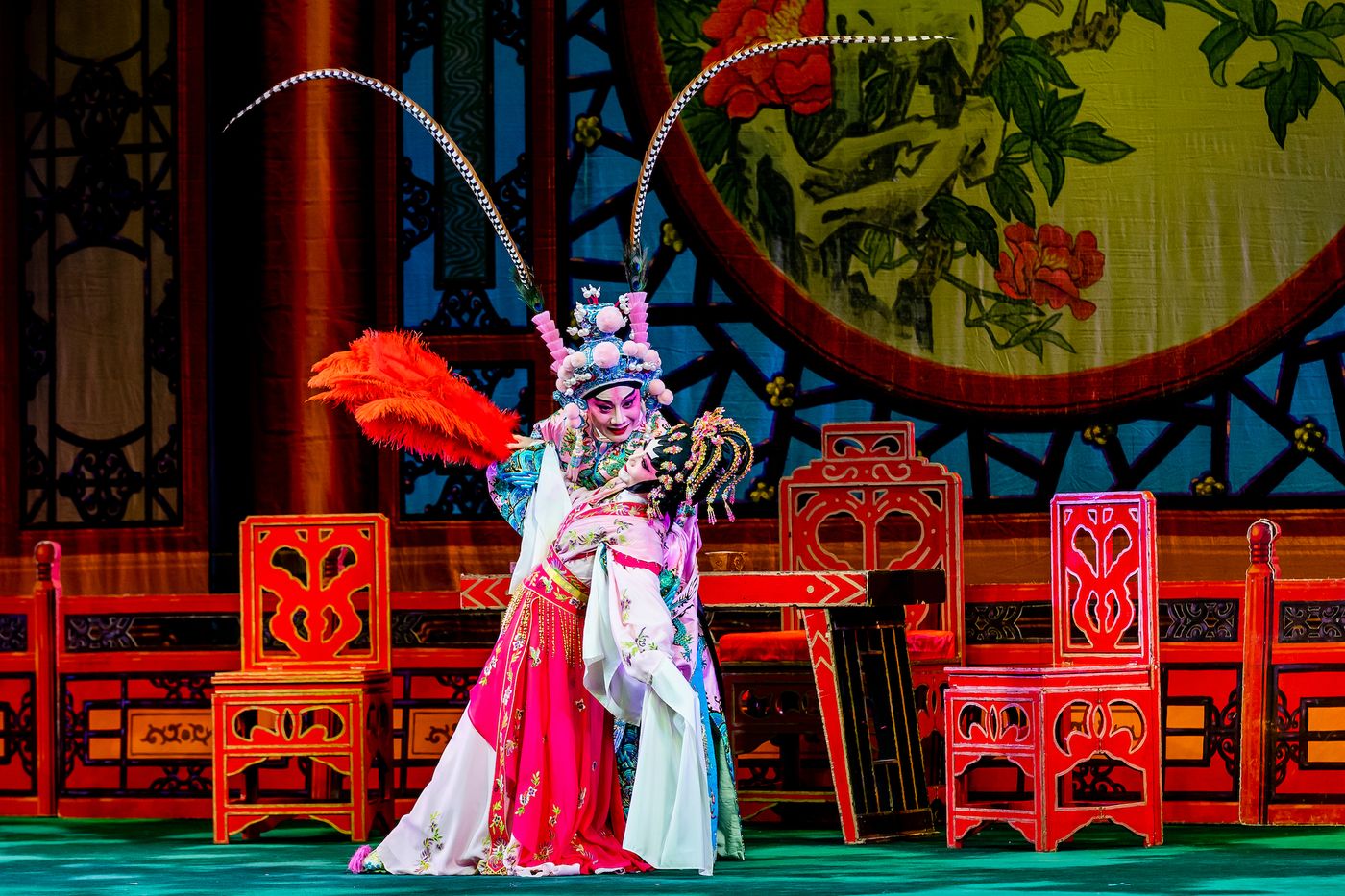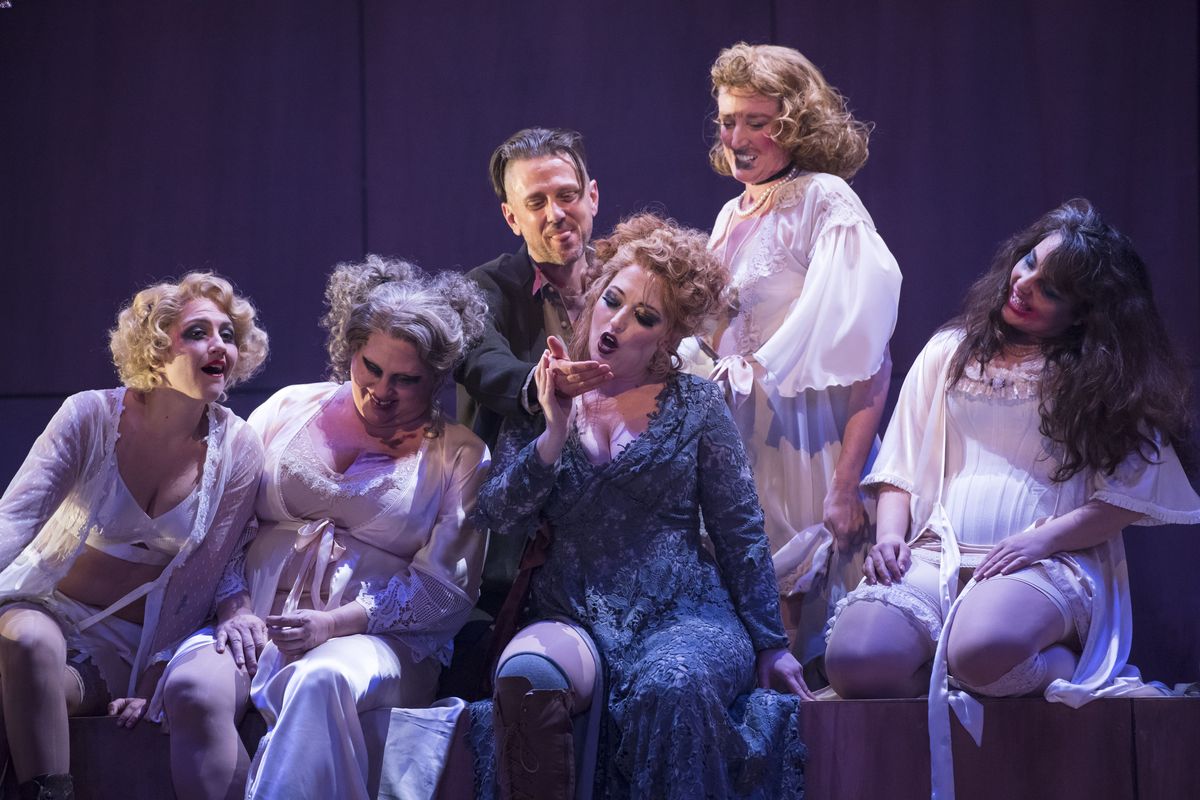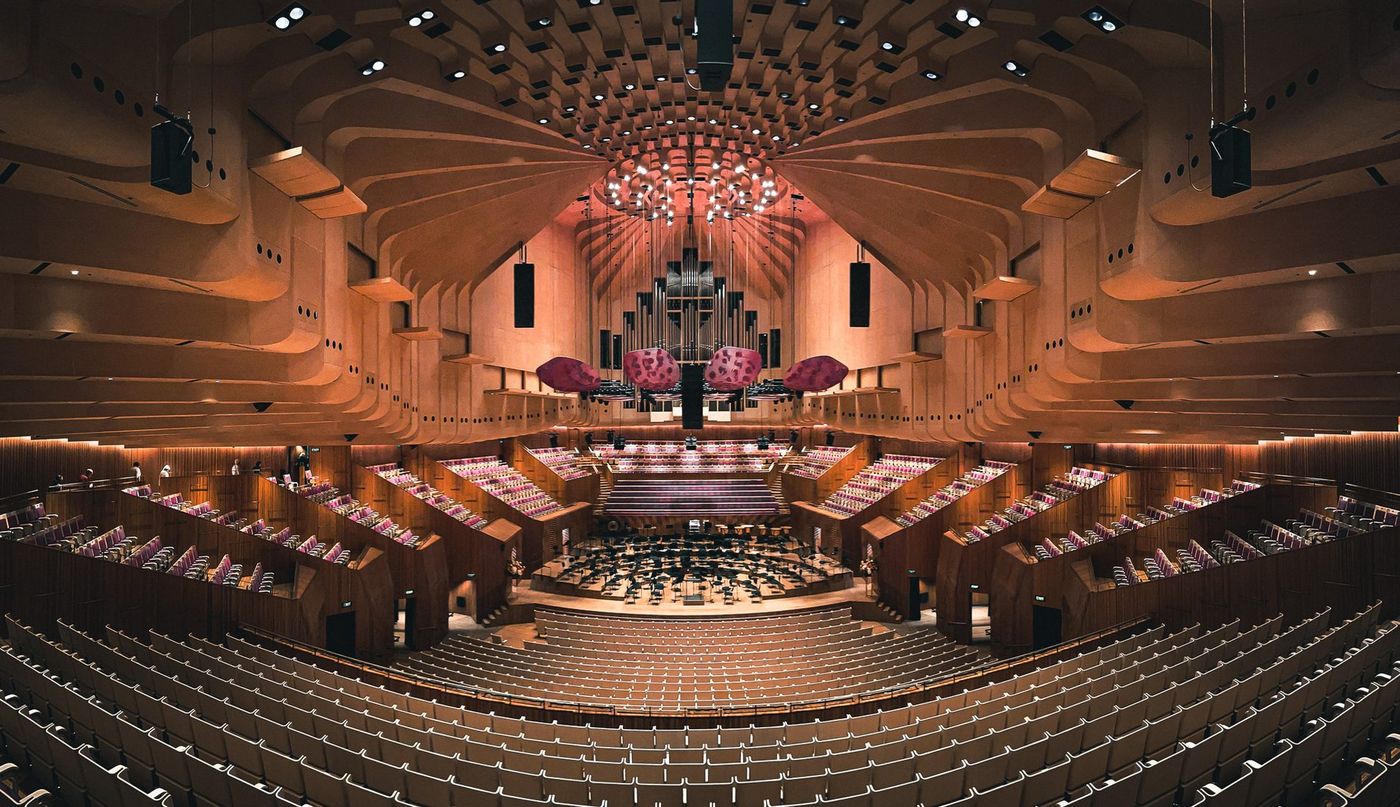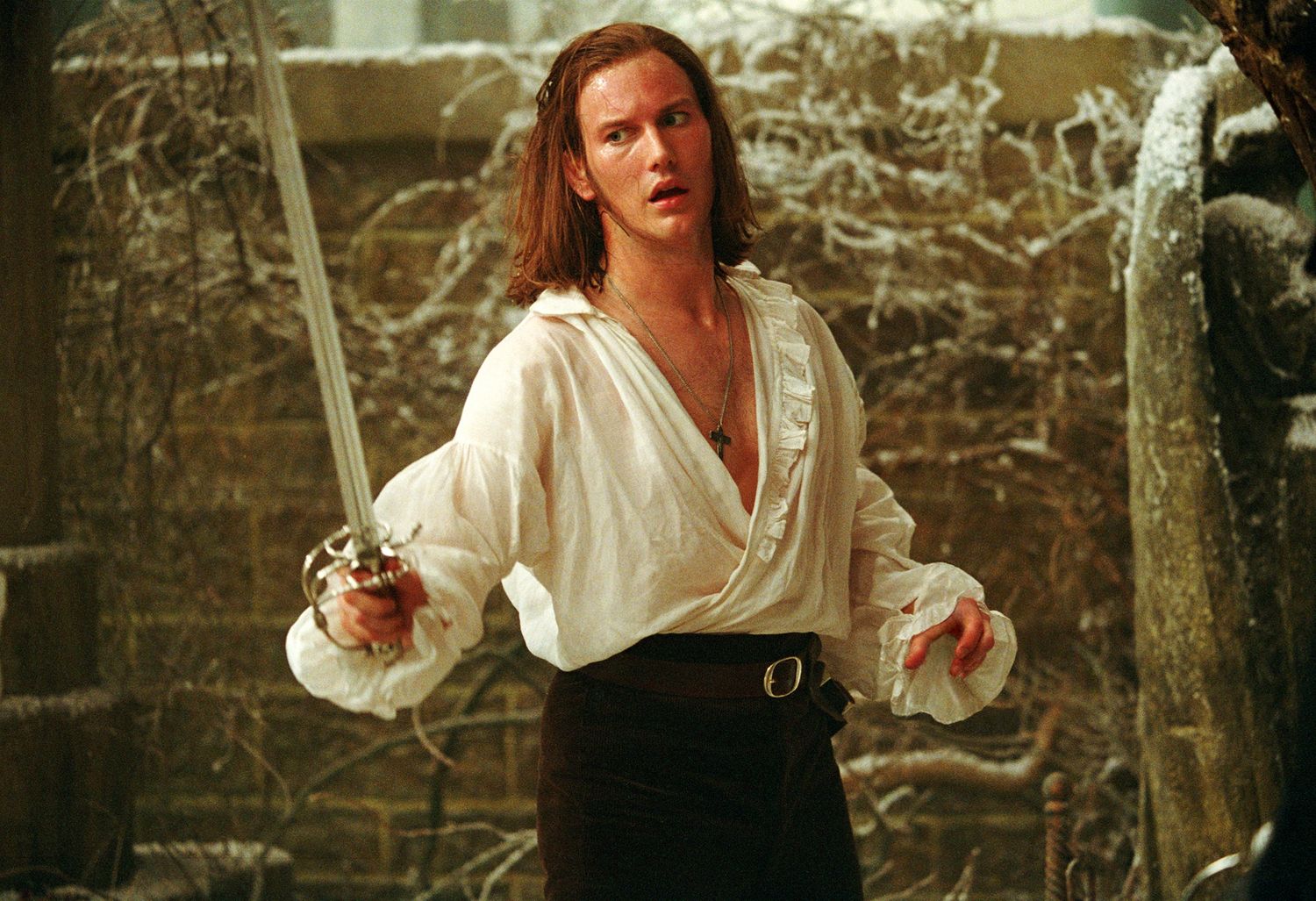Home>Events & Info>Opera>How To Understand Opera
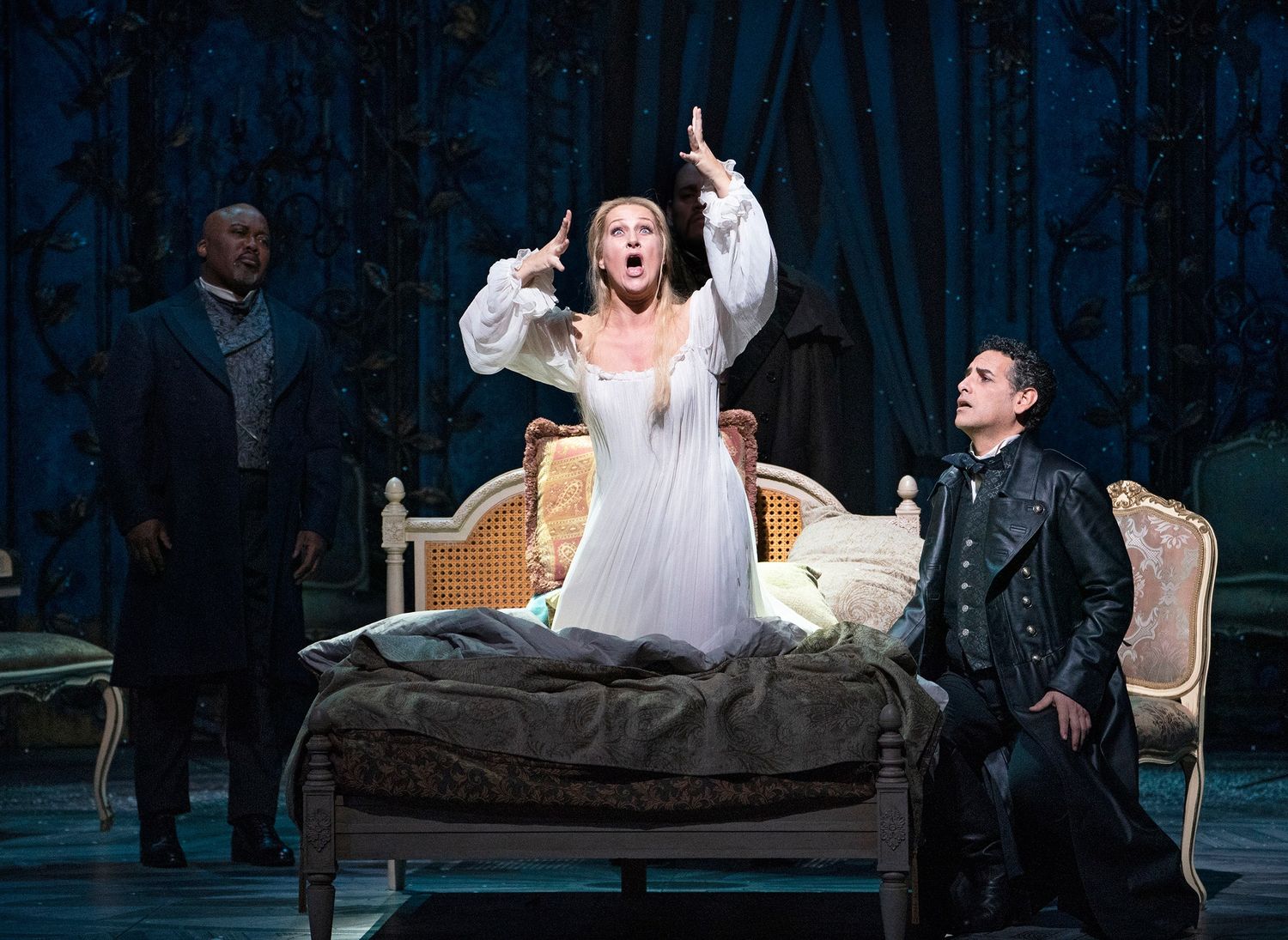

Opera
How To Understand Opera
Modified: February 24, 2024
Learn how to understand and appreciate the intricate beauty of opera, from its history to the different styles and vocal techniques. Discover the magic of opera today!
(Many of the links in this article redirect to a specific reviewed product. Your purchase of these products through affiliate links helps to generate commission for AudioLover.com, at no extra cost. Learn more)
Table of Contents
Introduction
Welcome to the captivating world of opera! Whether you’re a seasoned opera aficionado or a curious beginner, this article is your guide to understanding and appreciating this timeless and enchanting art form. Opera combines music, theater, and storytelling, creating an immersive experience that has captivated audiences for centuries. From epic spectacles to intimate dramas, opera offers a diverse range of emotions and themes that resonate with people from all walks of life.
In this article, we will explore the history of opera, its unique components, different vocal techniques utilized by opera singers, and the various operatic styles that have evolved over time. We will also delve into commonly performed operas and provide tips for attending an opera performance.
Whether you want to learn the basics of opera or deepen your existing knowledge, this article will serve as a comprehensive resource. So, grab a seat and get ready to embark on a journey through the grand stages, powerful voices, and timeless stories of the opera world.
What is Opera?
At its core, opera is a dramatic art form that combines music, singing, acting, and stagecraft to create a powerful and emotionally charged storytelling experience. Originating in Italy during the 16th century, opera quickly spread throughout Europe and became one of the most influential forms of performing arts.
What sets opera apart from other genres of music is its use of the human voice as the primary instrument. Opera singers, known as “opera performers” or “vocalists,” undergo extensive training to develop their vocal skills and project their voices over the orchestra to reach the audience.
Opera performances are typically accompanied by a full orchestra, which provides a rich and dynamic musical backdrop to the dramatic action taking place on stage. The music in opera is composed specifically to enhance the emotional impact of the story, with soaring arias and powerful ensemble numbers that express a range of emotions, from love and joy to heartbreak and despair.
Opera is known for its visually striking productions, elaborate sets, and stunning costumes that transport the audience to different time periods and settings. It often incorporates other art forms, such as dance, visual arts, and theatrical effects, to create a complete sensory experience.
The stories presented in opera cover a wide range of themes, from mythology and historical events to romance, tragedy, and social commentary. Opera librettos, or texts, are usually written in the language of the intended audience, allowing people from diverse cultures and backgrounds to connect with the performances.
Opera has evolved over the centuries, incorporating different styles and techniques. From the Baroque and Classical periods to Romantic and Modern opera, each era has left its mark on the art form, resulting in a rich and diverse repertoire of works.
Now that you have a basic understanding of what opera is, let’s delve deeper into its fascinating historical background and explore the components that make up this extraordinary art form.
Historical Background
The roots of opera can be traced back to the late Renaissance period in Italy, where a desire for revival of ancient Greek drama and music led to the creation of a new form of entertainment. In 1597, Jacopo Peri’s opera “Dafne” marked the beginning of opera as we know it today.
During the Baroque era, opera flourished as a favored form of entertainment for the aristocracy and the general public alike. It became a spectacle of grandeur and opulence, with composers such as Claudio Monteverdi and George Frideric Handel composing masterpieces that showcased the vocal abilities of the singers and the virtuosity of the instrumentalists.
In the Classical era, composers like Wolfgang Amadeus Mozart brought a more balanced and refined approach to opera, emphasizing the importance of the text and the melodic beauty of the music. Mozart’s operas, such as “The Marriage of Figaro” and “Don Giovanni,” continue to be widely performed and cherished to this day.
The 19th century marked the Romantic era of opera, where composers like Giuseppe Verdi and Richard Wagner pushed the boundaries of the art form. Verdi’s operas, characterized by their passionate melodies and powerful emotions, captured the spirit of Italian nationalism and became synonymous with the Italian operatic tradition.
Wagner, on the other hand, revolutionized opera with his concept of the Gesamtkunstwerk, or “total work of art,” where music, drama, and visual elements seamlessly blend together. His epic operas, such as “Tristan und Isolde” and “The Ring Cycle,” pushed the boundaries of the genre and continue to challenge performers and audiences alike.
In the 20th century, opera witnessed a shift towards more experimental and diverse styles. Composers like Benjamin Britten, Francis Poulenc, and Philip Glass introduced new approaches to storytelling and musical expression. Today, contemporary opera continues to evolve, embracing a wide range of styles and influences.
The historical development of opera has brought us a vast repertoire of timeless masterpieces, each reflecting the cultural and artistic climate of its time. Understanding the historical background of opera allows us to appreciate its evolution and contextualize the works being performed today.
Now that we have explored the historical background of opera, let’s move on to understanding the various components that make up this magnificent art form.
Components of Opera
Opera is a multidimensional art form that brings together various components to create a cohesive and immersive experience for the audience. Understanding these components is essential to fully appreciate the complexity and beauty of opera.
1. Music: The music in opera is a fundamental element, providing the emotional and dramatic foundation. Composers write the music, which includes arias (solo vocal pieces), ensembles (duets, trios, etc.), and choruses. The orchestration accompanying the singing adds depth and texture to the music.
2. Libretto: The libretto is the text or script of an opera. Written by a librettist, it contains the lyrics for the singers and outlines the dramatic structure and dialogue. The libretto is crucial in conveying the story and character development.
3. Singers: Opera singers, often referred to as vocalists or opera performers, are highly trained professionals who bring the characters to life through their singing and acting abilities. They possess the vocal technique required to project their voices over the orchestra and express the emotions of their respective roles.
4. Acting: Acting is a vital component of opera, as it brings the characters and their relationships to life on stage. Opera singers must not only have exceptional vocal skills but also the ability to embody their characters through physical expression, gestures, and facial expressions.
5. Sets and Stagecraft: The sets and stagecraft in opera play a significant role in creating the visual world of the production. Elaborate stage designs, props, lighting, and special effects transport the audience to different locations and atmospheres, enhancing the storytelling experience.
6. Costumes and Makeup: The costumes and makeup worn by the performers further enhance the visual spectacle of opera. Designed to reflect the period, setting, and character traits, costumes help visually distinguish and establish the identities of the characters.
7. Chorus: The chorus is a group of singers who perform together in larger ensemble numbers. They contribute to the overall sound and atmosphere of the opera, portraying various characters or serving as a collective voice within the narrative.
8. Orchestra and Conductor: The orchestra, led by a conductor, provides the musical accompaniment for the singers and plays a vital role in setting the mood and atmosphere of the opera. The conductor ensures synchronization between the singers and the orchestra, balancing the dynamics and interpreting the composer’s intentions.
9. Stage Direction: The stage director is responsible for interpreting the libretto and bringing the production to life on stage. They collaborate with the performers, designers, and production team to create a cohesive vision and guide the overall artistic direction of the opera.
These various components come together harmoniously to create an enchanting and immersive operatic experience. By understanding and appreciating each element, audiences can fully immerse themselves in the compelling world of opera.
Now that we have explored the components of opera, let’s explore the vocal techniques utilized by opera singers to convey the emotions and beauty of the music.
Vocal Techniques in Opera
Opera singers are renowned for their exceptional vocal abilities, which allow them to project their voices over an orchestra and convey the emotions and nuances of the music. These singers undergo rigorous training to develop their voices and master a variety of vocal techniques specific to the operatic style.
1. Bel Canto: Bel canto, meaning “beautiful singing” in Italian, is a style characterized by smooth and flowing vocal lines, emphasizing the beauty of the voice and the art of singing. It requires singers to have a seamless legato (smooth and connected) technique, precise control over their breath, and an ability to execute intricate ornamentation.
2. Coloratura: Coloratura singing involves the agile and rapid execution of vocal runs, trills, and ornamentation. Coloratura sopranos or mezzo-sopranos are known for their flexibility and precision in navigating complex and intricate vocal passages. This technique showcases the singer’s mastery over their voice and adds a sparkling and virtuosic element to the performance.
3. Dramatic Technique: Dramatic singing is characterized by its power, intensity, and emotional depth. This technique is often employed by singers in roles that require a strong and robust voice to convey heightened emotions and dramatic moments. Dramatic singers have the ability to sustain long, powerful phrases and project their voices over the orchestra without straining.
4. Resonance and Projection: Opera singers must possess excellent resonance and projection, allowing their voices to be heard clearly and effortlessly in large performance venues without the use of amplification. Resonance involves the optimal use of the natural cavities in the head and chest to amplify the sound, while projection is the ability to focus and carry the sound to the back of the auditorium.
5. Vocal Registers: Opera singers utilize different vocal registers, including the chest voice, middle voice, and head voice, to achieve a wide range of vocal colors and expressiveness. Transitioning smoothly between these registers is essential for maintaining vocal control and flexibility throughout a performance.
6. Diction and Language: Clear diction and proper pronunciation of the text are essential for effective communication in opera. Singers must possess the ability to articulate words and vowels accurately in various languages to ensure the audience can understand the lyrics and storyline.
7. Interpretation and Expression: Opera singers must be skilled in the art of interpretation, bringing the character’s emotions and intentions to life through their vocal expression. This involves understanding the dramatic context of the music and using vocal techniques to convey the subtleties and nuances of the character’s emotions.
8. Vocal Health and Stamina: Opera singing requires stamina and vocal health to sustain long and demanding performances. Singers must develop proper vocal warm-up and cooldown routines, practice healthy vocal habits, and take care of their voices to prevent vocal fatigue and maintain their vocal longevity.
These vocal techniques, combined with the singers’ individual artistry and interpretation, contribute to the magic and allure of the operatic experience. Understanding the vocal skills and techniques employed by opera singers can deepen the appreciation for their remarkable talent and the intricate art of opera.
Now that we have explored the vocal techniques in opera, let’s delve into the various styles and genres that have evolved within the world of opera over the centuries.
Understanding Operatic Styles
Opera has evolved over the centuries, giving rise to a multitude of styles and genres that showcase the diversity and innovation within the art form. Each operatic style carries its own characteristics, themes, and musical conventions, contributing to the rich tapestry of the operatic repertoire.
1. Baroque Opera: Baroque opera emerged in the 17th century, characterized by ornate and elaborate musical structures. Composers like Claudio Monteverdi and George Frideric Handel brought to life mythological stories and historical dramas, often featuring intricate vocal ornamentation and extended virtuosic passages.
2. Classical Opera: Classical opera, popular during the 18th century, sought a more balanced and natural approach. Composers like Wolfgang Amadeus Mozart composed operas that emphasized character development, melodic beauty, and dramatic storytelling. The music became more refined and symmetrical, with a balance between solo arias, ensemble numbers, and recitative passages.
3. Romantic Opera: The Romantic era saw a shift towards heightened emotion, dramatic intensity, and grandiosity in opera. Composers like Giuseppe Verdi and Richard Wagner revolutionized the genre with their powerful and passionate works. Verdi’s Italian operas evoked nationalism and focused on human emotions, while Wagner’s operas were epic in scale, exploring mythological and philosophical themes.
4. Bel Canto Opera: Bel canto, meaning “beautiful singing,” refers to a vocal style that emerged in the early 19th century. Composers like Gaetano Donizetti and Vincenzo Bellini created operas that showcased the virtuosic abilities of their singers. Bel canto operas are characterized by lyrical melodies, vocal agility, and expressive ornamentation.
5. Verismo Opera: Verismo opera emerged in the late 19th century, focusing on realistic portrayals of everyday life and gritty subjects. Composers like Giacomo Puccini crafted works that depicted love, tragedy, and social issues with intense emotion and vivid storytelling. Verismo operas often feature powerful arias and duets that convey raw human emotions.
6. Modern and Contemporary Opera: In the 20th and 21st centuries, opera has continued to evolve and embrace new styles and techniques. Composers like Benjamin Britten, Philip Glass, and John Adams have experimented with different forms of storytelling, incorporating elements of minimalism, atonality, and multimedia into their works.
Understanding the various operatic styles allows us to appreciate the different artistic approaches and musical innovations that have shaped the landscape of opera. Whether it’s the elegance of Baroque, the passion of Romanticism, or the experimentation of modern opera, each style offers a unique experience for both performers and audiences.
Now that we have explored the different operatic styles, let’s take a look at some of the most commonly performed operas that have captivated audiences worldwide.
Commonly Performed Operas
The world of opera boasts a vast repertoire, with numerous works that have stood the test of time and continue to be performed regularly on stages around the world. These operas vary in style, era, and themes, captivating audiences with their captivating stories and beautiful music. Here are some of the most commonly performed operas:
1. The Marriage of Figaro (Le Nozze di Figaro) by Wolfgang Amadeus Mozart: This comedic masterpiece, set in the 18th century, tells the story of Figaro and Susanna’s wedding and the chaos that ensues. With its sublime music and witty plot, this opera explores themes of love, desire, and class dynamics.
2. La Traviata by Giuseppe Verdi: This emotionally charged opera follows the tragic love story of Violetta, a courtesan, and Alfredo Germont. Themes of love, sacrifice, and societal expectations are portrayed through Verdi’s passionate and poignant music.
3. Carmen by Georges Bizet: Set in Seville, Spain, Carmen is a tale of love, jealousy, and fate. The fiery gypsy woman Carmen captivates the hearts of men, including the soldier Don José, leading to tragic consequences. This opera is known for its vibrant melodies and dramatic intensity.
4. The Magic Flute (Die Zauberflöte) by Wolfgang Amadeus Mozart: Mozart’s whimsical and fantastical opera follows the journey of Prince Tamino as he battles through trials and tribulations to win the hand of Princess Pamina. Filled with enchanting music and a symbolic storyline, The Magic Flute explores themes of love, enlightenment, and the power of music.
5. La Bohème by Giacomo Puccini: Set in 19th-century Paris, this heart-wrenching opera tells the story of a group of bohemian artists and their intertwining relationships. La Bohème explores themes of love, friendship, and the pursuit of dreams, set against Puccini’s emotionally charged music.
6. The Barber of Seville (Il Barbiere di Siviglia) by Gioachino Rossini: This lively and comedic opera follows the clever Figaro as he helps Count Almaviva court the beautiful Rosina, navigating numerous comedic misadventures along the way. Rossini’s delightful music and fast-paced comedic timing make The Barber of Seville an audience favorite.
7. Aida by Giuseppe Verdi: Set in ancient Egypt, Aida is a grand and epic opera that tells the story of the love triangle between the Ethiopian princess Aida, the Egyptian warrior Radamès, and the princess Amneris. Verdi’s majestic music and the grandeur of the production captivate audiences with its emotional depth and theatricality.
8. Tosca by Giacomo Puccini: This intense and dramatic opera follows the tragic story of the singer Floria Tosca, her lover the artist Mario Cavaradossi, and the ruthless police chief Baron Scarpia. Tosca explores themes of love, betrayal, and political turmoil, accompanied by Puccini’s powerful and sweeping music.
These are just a few examples of the many operas that have become staples of the repertoire. Each opera offers its own unique blend of captivating storytelling, memorable melodies, and powerful emotions, making them beloved by audiences worldwide.
Now that we have glimpsed into the world of commonly performed operas, let’s explore how to fully appreciate the opera experience when attending a live performance.
Attending an Opera Performance
Attending an opera performance is a thrilling and enchanting experience that allows you to immerse yourself in the world of music, drama, and visual spectacle. Whether you’re a seasoned opera-goer or attending for the first time, here are some tips to enhance your experience:
1. Choose the Right Production: Opera productions come in various styles, ranging from traditional to modern interpretations. Consider your preferences and research the production before attending to ensure it aligns with your expectations.
2. Familiarize Yourself with the Story: Before attending, take the time to read or listen to the opera’s libretto. Understanding the storyline, characters, and themes will enhance your appreciation of the performance.
3. Dress Appropriately: While there’s no strict dress code for attending the opera, it’s customary to dress elegantly or business casual. Observing the general dress etiquette adds to the sense of occasion and respect for the performers.
4. Arrive Early: Arriving early allows you to settle into your seat, explore the venue, and soak in the ambiance. It’s also courteous to arrive punctually to avoid disturbing other patrons during the performance.
5. Read the Program: The program provides valuable insights into the opera, the performers, and the creative team. Take the time to read through it before the performance to gain a deeper understanding of the production.
6. Engage with the Music: Listen actively and let the music transport you. Pay attention to the melodies, harmonies, and orchestration. Appreciate the skill and artistry of the performers and the emotional journey the music takes you on.
7. Watch the Performers: Opera is a visual art form, so take the time to observe the performers’ expressions, gestures, and interactions. Their acting adds layers of meaning and brings the characters to life.
8. Follow the Supertitles: Supertitles, displayed above the stage, provide translations of the libretto. They allow you to follow the lyrics, even if the opera is performed in a language unfamiliar to you, enhancing your understanding of the story.
9. Appreciate the Production Elements: Take note of the sets, costumes, and lighting design. These elements contribute to the overall aesthetic and atmosphere of the production, enhancing your visual experience.
10. Respect Theater Etiquette: During the performance, maintain silence, refrain from using electronic devices, and avoid any disruptive behavior. Show respect for the performers and fellow audience members by keeping distractions to a minimum.
Attending an opera is an opportunity to immerse yourself in a unique form of art and storytelling. By following these tips and approaches, you can fully appreciate the beauty, emotion, and craftsmanship that opera offers.
Now that we have explored the ways to enjoy an opera performance, let’s conclude our journey with some final thoughts on appreciating opera as a beginner.
Appreciating Opera: Tips for Beginners
Opera may seem daunting to those who are new to the art form, but with a little guidance and an open mind, it can become a deeply satisfying and enriching experience. Here are some tips to help beginners appreciate and enjoy opera:
1. Start with Well-Known Operas: Begin your opera journey by exploring famous and widely performed works. Operas like Mozart’s “The Marriage of Figaro,” Verdi’s “La Traviata,” or Puccini’s “La Bohème” are great starting points. These operas have memorable melodies and engaging storylines that can captivate newcomers.
2. Listen to Opera Recordings: Listening to opera recordings allows you to become familiar with the music and the voices of different opera singers. Start with studio recordings and explore different interpretations to find the ones that resonate with you. This will help you develop an appreciation for the unique sound and expressive capabilities of opera vocalists.
3. Attend Live Performances: Nothing compares to the magic of a live opera performance. Check local opera companies, theaters, and events to find opportunities to attend live performances. Seeing the singers, sets, and costumes in person can greatly enhance your experience and deepen your connection to the art form.
4. Read Synopses and Translations: Before attending a performance or listening to an opera, read a synopsis to gain an understanding of the story. If the opera is in a foreign language, read the translation or follow supertitles during the performance. Knowing the storyline will allow you to fully engage with the characters and follow the narrative.
5. Learn About the Composer and the Historical Context: Delving into the background of the composer and the era in which the opera was written can provide valuable insights. Understanding the cultural and historical context helps in appreciating the themes, musical choices, and innovations of the work.
6. Explore Different Styles and Periods: Opera encompasses a wide range of styles and periods, so explore beyond familiar territory. This will give you a broader perspective on the art form and introduce you to new composers, styles, and approaches. You might discover hidden gems that resonate with your personal taste.
7. Attend Pre-Performance Talks or Lectures: Many opera houses offer pre-performance talks that provide background information about the opera and its production. These talks offer valuable insights into the music, story, and staging, enriching your understanding and appreciation of the performance ahead.
8. Embrace the Emotional Journey: Opera is known for its ability to evoke powerful emotions. Allow yourself to be swept away by the music and the story, immersing yourself in the intense emotions expressed by the characters. Opera has the power to move and transport you, so embrace the emotional journey it offers.
9. Discuss and Share the Experience: Engage in conversations about opera with fellow opera-goers or join online communities. Sharing your thoughts, experiences, and discoveries can deepen your understanding of opera and expose you to different perspectives.
10. Be Open to New Experiences: Approach opera with an open mind and a willingness to explore different styles and interpretations. Opera is a diverse and dynamic art form, and being open to new experiences allows you to discover the elements that resonate with you personally.
With these tips in mind, you can embark on a rewarding journey into the world of opera. Remember, opera is meant to be experienced and enjoyed, and the more you explore, the more you will discover the beauty and depth that this art form has to offer.
Now that we have shared some tips for beginners, let’s wrap up our exploration of opera and reflect on the richness and enduring appeal of this captivating art form.
Conclusion
Opera is a multifaceted art form that combines music, singing, acting, and visual elements to create a captivating and transformative experience. From its historical roots to the various operatic styles that have emerged over the centuries, opera has evolved into a diverse and culturally significant form of storytelling.
Understanding opera starts with exploring its components, including the music, singers, sets, costumes, and librettos. By delving into the vocal techniques employed by opera singers, we can appreciate the skill and artistry required to convey the emotions and beauty of the music.
Opera offers a wide range of styles and genres, from the elegance of Baroque to the emotional intensity of Romanticism, allowing for an array of storytelling perspectives and musical expressions. Exploring commonly performed operas helps us recognize the enduring masterpieces that continue to captivate audiences worldwide.
Attending an opera performance provides a unique opportunity to witness the magic unfold on stage. By following tips such as choosing the right production, familiarizing yourself with the story, and engaging with the music and performers, you can fully immerse yourself in the world of opera.
For beginners, appreciating opera involves exploring well-known operas, listening to recordings, attending live performances, and gaining insights into the composer and historical context. Embracing the emotional journey and being open to new experiences allows for a deeper appreciation of opera’s power and artistry.
In conclusion, opera remains a vibrant and captivating art form that continues to inspire and move audiences around the world. From the breathtaking music to the enthralling performances and exhilarating storytelling, opera offers a unique experience that merges the passion of music with the power of theatrical expression.
So, whether you are a newcomer or an established opera enthusiast, let your curiosity and love for music guide you as you explore the world of opera and discover the enchantment that awaits you.

